Carving Class with The Master, Dimitrios Klitsas
It was hard carving away what I considered my best work—really hard—but now my best work is better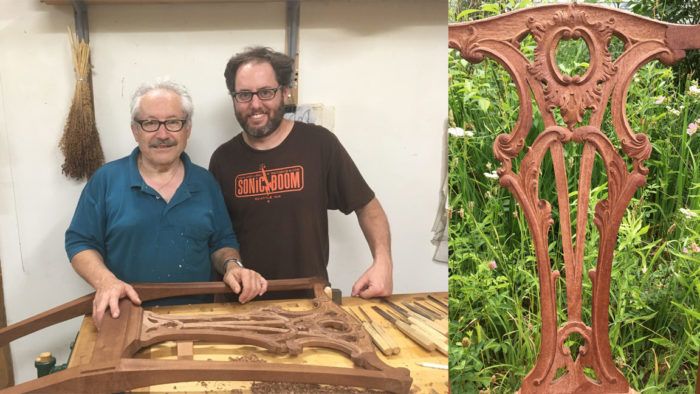
I vividly remember finishing the carving pictured above. It felt satisfying to complete something more ambitious than anything I’d attempted previously. It looked good to my eyes, which, in most circumstances, is what matters. Instead of moving on to another project, however, I spent the next two days working over the very same carving. What happened?
I was in the midst of a two-week-long class with master carver Dimitrios Klitsas at his beautiful shop in Hampden, Mass. After praising my work, Dimitrios picked up a gouge and started working a few things over … and then a few more things. My curves needed to be curvier, my shapes bolder, and my lines needed to flow better and with more energy. His eyes, with more than 50 years of experience, saw what mine could not. Not only that, his eyes, mind, and hands worked together seamlessly. I was there to close the gaps between what I could conceive, see, and execute, so for two more days there was a lot of back and forth. He’d demonstrate and then I’d carve, and so on, until finally with a pat on the back and a “Bravo Billy,” he said I was done. I now saw it, too. Most importantly, I could now sense the difference between what I had considered good work and what my best work could be. This is one of the biggest lessons to learn in craft and it’s mostly likely to come with the help of a teacher.
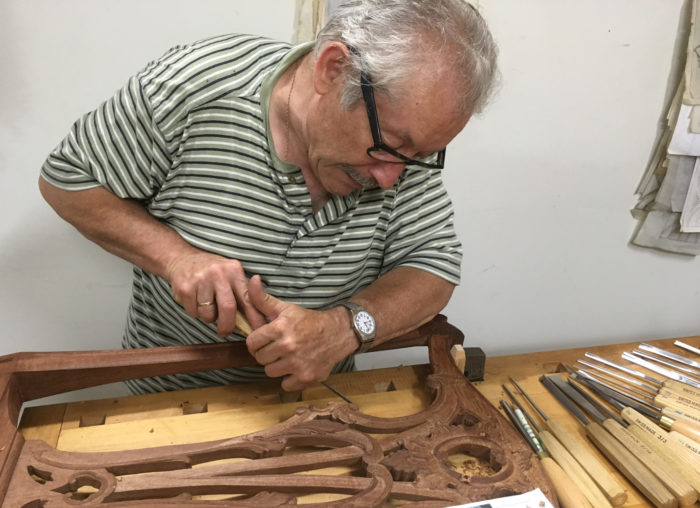
Modern woodworking media throws instruction and information at us from so many directions. We read about techniques or watch videos, then head to the shop to try our hand at doing something new. When we work ourselves into trouble, we go back to the source and maybe find an answer, but maybe not. The tools and the wood always offer feedback, but the books and videos almost never do. The information only flows in one direction. Perseverance and increasing experience leads to hard-earned breakthroughs, but it’s pretty easy to also wind up mired in frustration. Nowhere is this lack of feedback more debilitating than in the development of a keen critical mind and eye for assessing our own work. Those skills take time and require guidance. Seven-year apprenticeships are unlikely for the modern woodworker, but classes with master craftspeople abound. Time with a mentor coupled with a lot of time at the bench is simply the best way to push your skills to new heights.

Since 2013 I’ve spent five weeks carving under Dimitrios’s instruction and have learned a lot from the experience including what constitutes an ideal craft class. It starts with an excellent teacher and a student with an open mind. Dimitrios, a master carver with a lifetime of experience (he started in his early teens at a technical school in his native Greece), has also been a dedicated teacher for the past four decades. His technical mastery could be intimidating, but his easygoing demeanor and willingness to share his knowledge instead offer inspiration. Rather than lecture to a group of students, he caters his instruction to the needs and experience of each individual, and he does not expect excellence on the first try, or the eighth for that matter. At the same time, he won’t let you off easy. Instead, he’ll push you to develop good working habits, to carve ambidextrously, and to keep going until your work is beautiful. Like only the best teachers, Dimitrios has the rare ability to criticize your work in a way that inspires you to do better rather than to walk away feeling defeated.
In addition to having a good teacher, a class needs to take place in a good, properly equipped environment. Dimitrios’s large, well-lit shop certainly fits that description. The space is filled with many tall benches ideally suited for long days of carving (the work surfaces are just below elbow height). By long days, I don’t mean a 9-to-5 schedule. I’m talking about one or two weeks of 12- to 14-hour days at the bench. That kind of immersion can be exhausting, but it’s the good kind of exhaustion, not the kind that hurts physically. A typical day begins in the shop around 8:30 and runs until around 5:30. After dinner, it’s back to the shop until 10 or so. Students learn to pace themselves and to step away from the bench now and again to look for inspiration in the many carvings hanging in the shop or out in the scenic Massachusetts countryside that surrounds it. Dimitrios respects the time and money his students have sacrificed to come to carve and shows that by giving a lot of shop time.
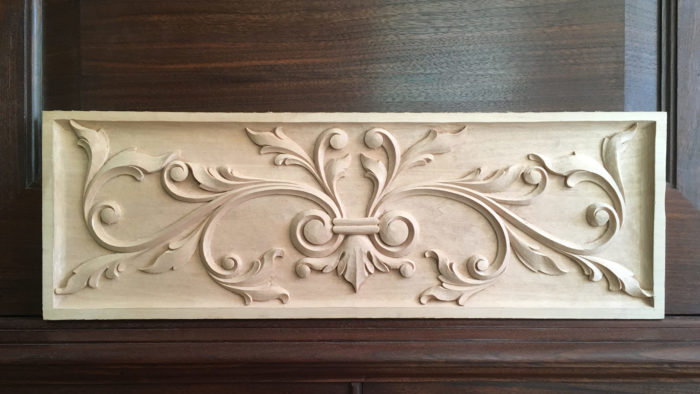
A good class also needs a clear set of expectations. Some believe a class should end with a completed project. This only works if the project is the means for teaching bigger lessons that students can carry forward into future work. While it’s nice and important to have something physical to show for your efforts, new or better skills should always be the main focus. Dimitrios emphasizes exercises that build skill and increase a student’s ability to make good critical judgments about their own work. Last year, for example, I spent two weeks carving the pattern shown above along with one other large exercise. That experience gave me the confidence to attempt an elaborately carved chair design from Thomas Chippendale’s pattern book on my own after I got home. Though I was happy with how the chair was turning out, I was a bit nervous about showing it to the master when I returned for class this past June. Regardless, I brought him my chair back. He looked at is a good start and then we spent the next week carving on it, making it better. Below you can see the before on the left and the after on the right. Once again, the curves were made curvier, the shapes bolder, and the sense of flow was improved greatly. It was hard carving away what I considered my best work—really hard—but now my best work is better.
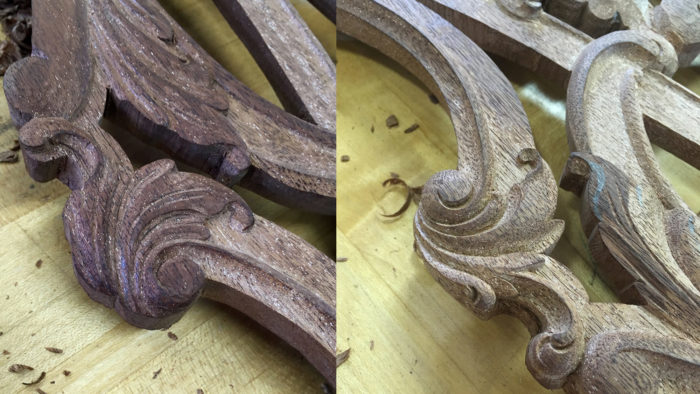
This is exactly why you should go out and take a class. The feedback from a master craftsperson is invaluable. I know that classes are expensive. Yes, I’m fortunate that Colonial Williamsburg–my employer–and our many great benefactors have made educational opportunities like this available to me. But sometimes investing in yourself pays greater dividends than investing in a new tool. I urge you to get out of the comfort of your own shop and take a class with a master carver, chairmaker, or furniture maker. Improving your skills is worth it.
Check out Master Wood Carver Dimitrios Klitsas at http://www.klitsas.com/
More on FineWoodworking.com
- How to Carve a Ball-and-Claw Foot
- Master Class: Decorative Chip Carving
- Watch a Woodworking Master at Work with His Carving

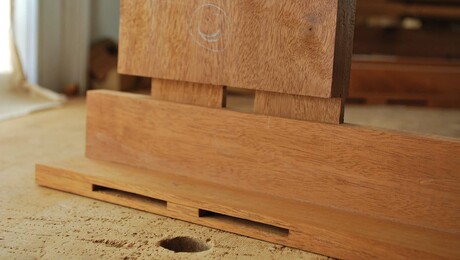
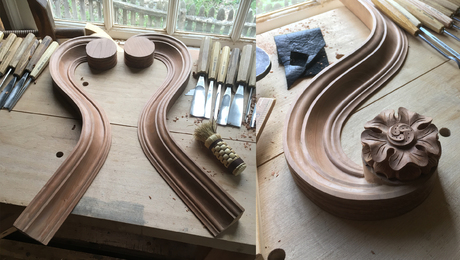
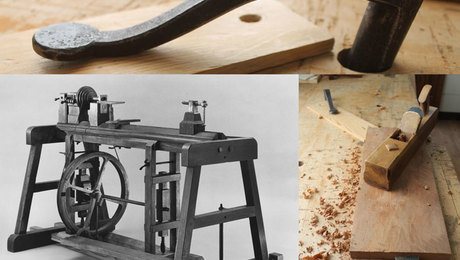
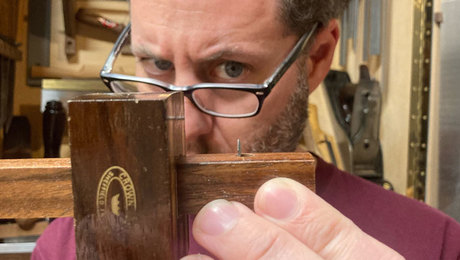





















Comments
Wonderful article!
A great analysis of how a master carves new pathways into our brains and bodies enabling us to perform at new levels never thought possible. So much to know and to perfect, but hey that's the journey versus the final destination. Thanks for inspiring us!
A lot has been said here that I have found to be right on target. Though I have not been under Dimitrio's instruction, I have of others and I have experienced much the same. In turn I have taught others in addition to commissions as a professional carver. Note that I resist being called a master carver as there is no clear definition of such in American craftsmanship. I have done professional work since 1973 but now have had to retire for health reasons. I occasionally do consulting when asked.
Log in or create an account to post a comment.
Sign up Log in